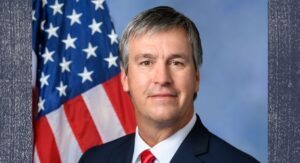Jim Carnes: Expanding Medicaid would improve Alabama’s health, budgets and economy

Imagine being an Alabama leader and having a tool at your disposal that could help families, strengthen the workforce, save rural hospitals, fight opioid addiction, improve the state’s health status and grow the economy. The only catch: It was created by members of another political party. That’s the dilemma that has kept Alabama from expanding Medicaid for the last eight years. We’re a different country now than we were in 2010, when a Democratic Congress passed and President Barack Obama signed the Affordable Care Act (ACA), making Medicaid expansion possible. With so much water under the bridge – and the ACA still standing – maybe it’s time to seize one of the law’s more durable provisions and take credit for the good it brings. A new Urban Institute study offers a fresh look at just how much Alabama stands to gain from closing the coverage gap for low-income adults. The ACA created two major new avenues for affordable health coverage. First, states would raise their income limits on Medicaid to make coverage available to adults earning up to 138 percent of the federal poverty level ($28,676 a year for a family of three). And second, the Health Insurance Marketplace would offer discounted premiums for private coverage to people with incomes above the poverty level ($20,780 for a family of three). With expansion, each state would be responsible for a small fraction of associated costs, topping out at 10 percent in 2020, with the federal government paying the rest. Even after a 2012 U.S. Supreme Court ruling declared that Medicaid expansion was optional for states, 31 states and the District of Columbia seized the opportunity to improve lives, improve communities and improve their budgets for a dime on the dollar. But Alabama and 18 others have stayed behind. Hundreds of thousands of uninsured Alabama workers are paying the price for that inaction. Under the state’s current rules, adults under age 65 and without a disability can receive Medicaid coverage only if they have a dependent child and earn less than 18 percent of the poverty level ($3,744 a year for a family of three). In other words, it’s impossible to work a minimum-wage job and receive Medicaid in Alabama. The flip side of this predicament is that coverage remains unaffordable for low-wage Alabama workers who don’t have employer health plans and don’t earn enough to qualify for Marketplace subsidies. This coverage gap is exactly the problem Medicaid expansion is designed to solve. The new Urban Institute report estimates that 314,000 Alabamians would enroll in Medicaid if Alabama extended eligibility to low-income workers. That would mean an additional $1.54 billion in federal funding surging into Alabama’s economy each year under the 9-to-1 federal match rate. It also would mean rural hospitals – like the one in Jacksonville that announced in May that it plans to close – would no longer be bleeding red ink through services to uninsured patients. Expanding Medicaid would strengthen our state’s budgets as well. Expansion would increase Alabama’s Medicaid enrollment by 33.8 percent, but the increase in state costs would be just 5.7 percent, according to the Urban Institute. That translates to $97 million more in state Medicaid funding each year. That increase would be more than offset by savings in mental health care, corrections and other services – not to mention the gains from fewer uncontrolled chronic illnesses, fewer premature births and improved worker productivity. A 2017 report in Health Affairs found “no significant increases in spending from state funds as a result of the expansion” in any of the states that expanded Medicaid. For Montana – which has less than a quarter of Alabama’s population – another study identified between $350 million and $400 million in new economic activity resulting from Medicaid expansion, supporting 5,000 jobs and $280 million in personal income each year. In any other industry, the prospect of such gains would have political candidates of all stripes blowing trumpets and leading parades. And those other economic development plans wouldn’t have the added advantage that this one brings: giving people a new lease on life by helping them get the health care they need. Isn’t it time we broke the partisan gridlock on the coverage gap? Isn’t it time we demanded that anyone seeking to lead our state offer a vision of a healthier Alabama – and a path to getting there? ••• Jim Carnes is policy director of Alabama Arise, a nonprofit, nonpartisan coalition of congregations, organizations and individuals promoting public policies to improve the lives of low-income Alabamians. Email: jim@alarise.org.
U.S. clings to health coverage gains despite political drama
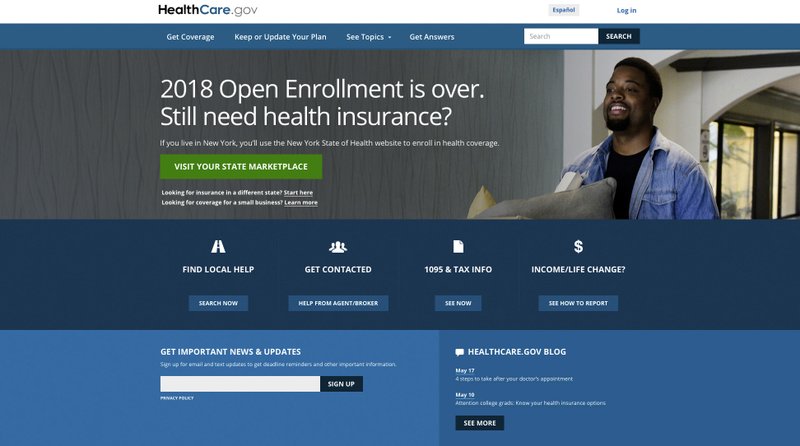
Americans kept up their health insurance last year despite President Donald Trump’s all-out push to dismantle the Obama-era coverage expansion. That’s the counter-intuitive conclusion from a major government survey Tuesday. After nearly a full year of Trump, the uninsured rate was 9.1 percent for 2017, almost the same as toward the end of the Obama administration, according the Centers for Disease Control and Prevention. That works out to a little more than 29 million people uninsured. Overall, the uninsured rate has dropped from 16 percent when the Affordable Care Act was signed in 2010, which translates roughly to 19 million people gaining coverage. “Despite all the noise and despite the chain-rattling Republicans have done with their failed attempts at repeal, at the end of the day the number of uninsured has stayed flat,” said health economist Gail Wilensky, a longtime GOP adviser. “That’s good news for the country, and it might turn out to be good news for Republicans when it comes time for the midterm elections.” But the CDC’s National Health Interview Survey also showed uninsured numbers edged higher for some groups, raising questions about potential problems this year and beyond. It doesn’t reflect congressional repeal of the health law’s unpopular requirement that individuals carry health insurance, since that doesn’t take effect until next year. Considered authoritative by experts, the CDC report contradicts popular story lines from both ends of the political spectrum. On the right, Trump and others warn that Obamacare is “imploding.” (Instead, enrollment is fairly resilient.) On the left, Democrats blame Trump administration “sabotage” for coverage losses. (No hemorrhaging was found.) “It’s a testament to the high value people place on health insurance,” said Katherine Hempstead, a senior health policy adviser at the nonpartisan Robert Wood Johnson Foundation. “People will tenaciously hang on to their health insurance.” Still, the survey found some worrisome indicators of issues potentially ahead: —The uninsured rate rose among “not poor” adults. (Translation: middle class.) That increase was statistically significant, rising to 8.2 percent in 2017. Hempstead said it may reflect the impact of sharp premium increases for individual plans for people in the solid middle class, who aren’t eligible for subsidized coverage under the ACA. “They are uniquely required to pay the full retail cost of health care,” she said. —The uninsured rate also rose significantly in states that have not taken advantage of the ACA’s Medicaid expansion for low-income people. It averaged 19 percent for adults in states that had not expanded Medicaid, a big difference from about 9 percent uninsured in states expanding low-income coverage. The Medicaid expansion survived repeal efforts and several states are moving to join the 32 others, plus Washington, D.C., that have expanded. Last year was tumultuous for health care, with Trump and Congress finally poised to deliver on the GOP vow to repeal President Barack Obama’s signature law. After repeated tries, the effort collapsed in the Senate. But Republicans did manage to undo the law’s unpopular requirement that most Americans maintain coverage or risk fines. Many experts believe the number of uninsured will increase when repeal of the so-called individual mandate goes into effect in 2019. Trump also used his executive authority to undermine Obama’s law. He pulled the plug on legally contested subsidies for deductibles and copayments, triggering a spike in premiums. His administration cut the HealthCare.gov sign-up season in half, and slashed the ad budget. Changes pending this year will allow insurers to offer lower-cost plans that have fewer benefits, and can also turn away people in poor health. Separately, the CDC survey showed no slowing down of the longstanding shift to high-deductible health insurance, with nearly 44 percent of Americans now in plans that require individuals to pay at least $1,300 of medical bills each year, or $2,600 for family coverage. Two independent private surveys have recently shown an increase the U.S. uninsured rate, but the CDC’s approach is different. The government survey relies on face-to-face interviews, not telephone polling. And it’s based on data from about 78,000 people — a very large pool. “This report is as credible a data source on the uninsured as we have,” said Wilensky. Republished with the permission of the Associated Press.
A year after ‘Obamacare’ vote, Democrats see election cudgel
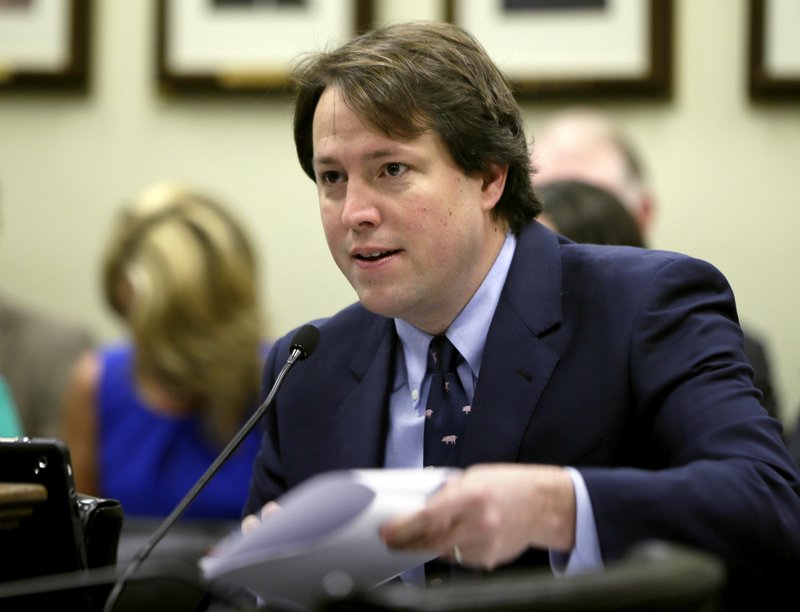
When Republicans muscled legislation scuttling the Obamacare health care law through the House a year ago Friday, Democrats waved sarcastically and giddily serenaded them with chants of, “Nah nah nah nah, hey hey, goodbye.” Now, Democrats are trying to make good on their taunts. They’re trying to use the vote as campaign weapon, hammering Republicans for voting to replace a popular statute with a bill Congress’ own budget experts said would have driven up premiums and the ranks of the uninsured. They’re already using it in ads from Georgia to Arizona and planning others in their drive to win House control in this November’s elections — often coupling it with December’s tax cuts, which disproportionately benefited businesses and wealthy Americans. “They walked the plank on a disastrous economic agenda,” said Charlie Kelly, executive director of the House Majority PAC, which backs Democratic candidates. He said the votes underscore a narrative of: “Wait a minute, these guys are absolutely not standing with working families. They’re trying to screw me on my health care.” Republican strategists offer mixed views on the issue’s impact, with the most optimistic hoping to damage Democrats by accusing them of favoring government-financed health care. About a third of Senate Democrats and two-thirds of House Democrats have backed such legislation, a favorite with the party’s most liberal voters, which Republicans say will prompt government decision-making about care and tax increases to finance the proposal’s huge costs. “A bigger government is not something they want to run on,” GOP pollster Jon McHenry said of Democrats. That’s not stopping Democrats from featuring health care in the campaign’s earliest ads. Georgia Democratic hopeful Bobby Kaple, seeking the nomination for an Atlanta-area district, says “Thank God for Obamacare” in his spot showing his two young children, born premature but healthy after expensive medical bills. In Arkansas, cancer survivor Clarke Tucker says he’ll “stand up to anyone who tries to take your health insurance” as he competes for the Democratic nomination for a seat surrounding Little Rock. “Health care is on their mind every day, and I understand that,” Tucker said of area voters in an interview. Democrats are also using the issue in their battle for the Senate, where Republican proposals to scrap Obama’s law flopped last summer, dooming the effort. Rep. Jacky Rosen, D-Nev., seeking to oust GOP Sen. Dean Heller, has run an ad saying, “Repeal and replace Sen. Dean Heller” that highlights his support for repeal legislation after initially opposing it. In Arizona, Democratic Senate hopeful Rep. Kyrsten Sinema is highlighting her family’s loss of health insurance when she was a child, saying, “I know what it’s like for a family to struggle to make ends meet.” The Democratic charge on health care represents a turnaround from recent elections. In 2010, just months after passage of the Affordable Care Act, Democrats lost control of the House as Republicans tapped into fears about the government’s growing role in health care. Four years later, Republicans grabbed Senate control following the botched rollout of the health law’s online insurance markets and some people’s loss of policies that fell short of the statute’s coverage requirements. The failed GOP repeal effort helped turn the tables. A Wall Street Journal-NBC News poll last month showed people trust Democrats over Republicans for handling health care by 18 percentage points. A Kaiser Health Tracking Poll in February showed Obama’s law with a favorable rating from 54 percent of Americans, its highest score in more than 80 Kaiser surveys since the statute’s enactment. “Voters are very upset with the actions Republicans took” trying to repeal Obama’s law, said Sen. Chris Van Hollen, D-Md., who heads Senate Democrats’ campaign committee. “This is an issue that we’re seeing at the top of voters’ minds, and this is across all states.” Even some Republicans concede the issue will be a tough one. Pennsylvania Rep. Charlie Dent, among only 20 Republicans who voted against the House repeal bill, said GOP candidates will be vulnerable because of the bill’s impact and because President Donald Trump privately labeled the GOP measure “mean” a month after it passed. “That ad more or less writes itself,” Dent said of the inevitable Democratic campaign spots. Former Rep. Tom Davis, R-Va., who once headed the House GOP’s campaign organization, said Republicans “would have owned” health care and steadily growing insurance premiums had they successfully enacted legislation. Instead, he says, “They may or may not own the outcomes,” adding, “I don’t think it’s a silver bullet for Democrats.” Democrats say they’ve gotten further ammunition from subsequent GOP actions. These include Trump’s halt of federal subsidies that helped insurers contain some costs and his easing of restrictions on short-term insurance plans with low costs but skimpy coverage. Last May, the nonpartisan Congressional Budget Office estimated that the House-passed bill would have left 23 million additional people uninsured by 2026 and boosted premiums an average 20 percent this year. Marking the vote’s anniversary, progressive groups planned more than a dozen rallies Friday from California to Virginia. The liberal Save My Care was airing a 30-second television ad in Washington, D.C., showing top Republicans celebrating the House vote with Trump in the White House Rose Garden. “We won’t forget” appears on a black screen after newscasters intone the bill’s impact, including letting insurers charge higher prices for people with pre-existing medical conditions. Republished with the permission of the Associated Press.
Survey: US uninsured up 3.5M this year; expected to rise

The number of U.S. adults without health insurance is up nearly 3.5 million this year, as rising premiums and political turmoil over “Obamacare” undermine coverage gains that drove the nation’s uninsured rate to a historic low. That finding is based on the latest installment of a major survey, released Friday. The Gallup-Sharecare Well-Being Index asks a random sample of 500 people each day whether they have health insurance. The survey found that the uninsured rate among adults was 12.3 percent during the period from July 1-Sept. 30, an increase of 1.4 percentage points since the end of last year. The increase in the number of uninsured is more striking because it comes at a time of economic growth and low unemployment. The annual sign-up season for subsidized private insurance plans under the Affordable Care Act starts Nov. 1, but it may not make much of a difference. President Donald Trump has stopped federal payments that reimburse insurers for lower copays and deductibles that the Obama-era law requires them to provide to people with modest incomes. His administration slashed the advertising budget for 2018 sign-ups, cut the length of open enrollment in half, and sharply reduced federal grants to groups that help consumers navigate the process. “The number of uninsured Americans likely will continue to rise,” the Gallup-Sharecare analysis noted, unless Trump and Congress take steps to stabilize insurance markets. A bipartisan bill to restart the canceled insurer payments faces opposition from conservatives and Trump has sent mixed signals. While “Obamacare” remains politically divisive, its coverage expansion helped about 20 million people get health insurance, bringing the uninsured rate to a historic low. Continued progress seems unlikely now. Next year’s premiums for plans sold on the health law’s marketplaces are expected to increase significantly in many communities, and insurer participation is down sharply, with about half of U.S. counties having only one carrier. Although consumers who are eligible for ACA subsidies are shielded from price hikes, many who buy individual plans get no financial assistance from the government. All told, more than 17 million people purchase their own policies. Independent experts who reviewed the Gallup-Sharecare findings said they appear to confirm other available evidence. “The results make sense and they track with the results of other rapid surveys,” said Matthew Buettgens, a senior research analyst with the Urban Institute health policy center. “No one is expecting this open-enrollment period to increase enrollment.” GOP health economist Gail Wilensky said the overall direction of the Gallup-Sharecare results seems reasonable, but she’ll await confirmation from government surveys that take longer to produce results, but dig deeper. “The only thing most Republicans in Congress seem to agree on is that they don’t like the ACA,” she said. “Hard to build an alternative legislative package without a sounder basis for policy and with the very narrow majority in the Senate.” Except for seniors covered by Medicare, the Gallup-Sharecare survey found that the uninsured rate increased among all major demographic groups. The loss of coverage was concentrated among middle-aged adults, with the uninsured rate rising by 1.8 percentage points among those 35-64 since the end of 2016. Households making less than $36,000 a year saw their uninsured rate go up by 1.7 percentage points. Among Hispanics, the rate increased by 1.6 percentage points, and among blacks the increase was 1.5 percentage points. The Gallup-Sharecare results are based on telephone interviews conducted July 1-Sept. 30, with a random sample of 45,743 adults, aged 18 and older, living in all 50 states and Washington, D.C. The margin of error is plus or minus 1 percentage point. Republished with permission from the Associated Press.
Ex-Obama officials begin health insurance sign-up campaign
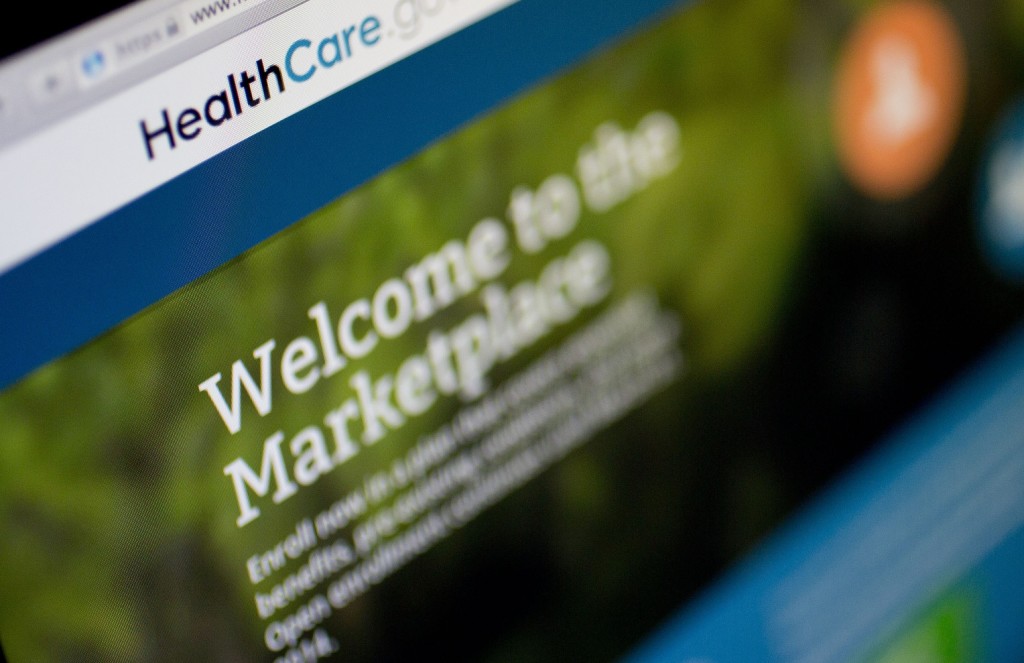
Former Obama administration officials are undertaking a private campaign to encourage people to sign up for coverage next year under the Affordable Care Act. With the start of open enrollment on Nov. 1, the Trump administration has slashed the Obama health law’s ad budget, as well as grants to outside organizations that are supposed to help people sign up. Although Republican attempts to repeal the law have proven futile so far, President Donald Trump hasn’t changed his view that the program is a “disaster.” The former Obama officials said their campaign, set to begin Wednesday, will focus on young adults and try to encourage people to sign up for government-backed private health insurance because of subsidies available to cushion the impact of rising premiums. The effort is headed by Lori Lodes and Joshua Peck, who directed outreach and sign-up efforts during much of former President Barack Obama‘s second term. Joining them are Andy Slavitt, who ran federal health insurance programs for Obama, activist-actors Alyssa Milano and Bradley Whitford, social commentator Van Jones and insurance industry veteran Mario Molina. Lodes said the campaign has a modest budget for now, meaning that targeted internet advertising is probably all it can manage, at least initially. About 10 million people are signed up for subsidized private insurance plans through HealthCare.gov and state-run insurance markets. That figure is well below projections when the law was passed in 2010. An additional 11 million or so have signed up for Medicaid in states that took advantage of the law’s expansion of the program to serve more low-income adults. Under Trump, the open enrollment period for 2018 has been shortened by about half. It now runs through Dec. 15. That’s the last day when people can sign up to get coverage that will be effective on Jan. 1. Some Democrats say that’s another indication that Trump is trying to “sabotage” insurance markets. But health insurers, with a vested interest in enrolling people, say a shorter, focused sign-up season period may actually be more manageable. Returning customers will be automatically re-enrolled unless they shop around and pick another plan. Health care consultant Dan Mendelson, president of data-tracker Avalere Health, said in an interview that he expects enrollment will remain relatively stable. “If you think about it, most of the people who are enrolled need the insurance,” he said. “They are heavily subsidized and they are going to show up because they need insurance for themselves and their families. I think there will be a base stability to enrollment, but I wouldn’t be looking for any major expansion.” Sens. Lamar Alexander, R-Tenn., and Patty Murray, D-Wash., are trying to negotiate a limited bipartisan deal to stabilize state-level markets for individual health insurance policies. People covered under the health law represent about half of those who purchase individual policies. Republished with permission from the Associated Press.
Health care bill teeters, GOP adds money to woo dissidents
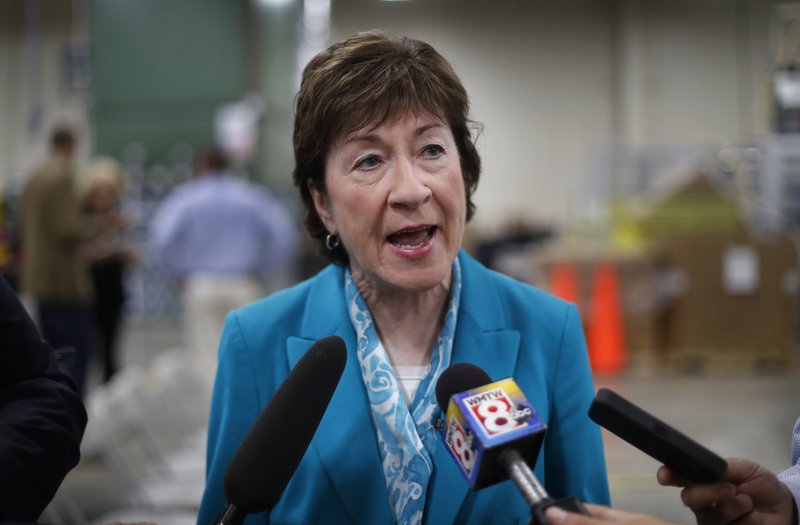
Top Republicans are adding money to their staggering effort to repeal the Obama health care law and say they’re pushing toward a climactic Senate faceoff this week. Yet their path to succeeding in their last-gasp effort has grown narrower, perhaps impossible. GOP senators’ opposition to their party’s drive to scrap President Barack Obama’s Affordable Care Act swelled to lethal numbers Sunday. Moderate Sen. Susan Collins all but closed the door on supporting the teetering bill and conservative Sen. Ted Cruz said that “right now” he doesn’t back it. President Donald Trump has pressed for a fresh vote, and White House legislative liaison Marc Short and Sen. Lindsey Graham, R-S.C., one of the measure’s sponsors, said Republicans would move toward a vote this week. Senate Majority Leader Mitch McConnell, R-Ky., has said he intends to consider the measure but hasn’t firmly committed to a vote. The Congressional Budget Office was expected to release its analysis of the legislation early this week. But the CBO, which is lawmakers’ nonpartisan fiscal analyst, has said that it doesn’t have time to determine the bill’s impact on coverage and premiums, major factors for some lawmakers deciding their votes. Instead, the office is expected to only detail its estimates of the measure’s effect on federal deficits. A vote must occur this week for Republicans to have any chance of prevailing with their narrow Senate majority. Next Sunday, protections expire against a Democratic filibuster, bill-killing delays that Republicans lack the votes to overcome. Already two GOP senators, Rand Paul of Kentucky and John McCain of Arizona, have said they oppose the legislation. All Democrats will vote against it. “No” votes from three of the 52 GOP senators would kill the party’s effort to deliver on its perennial vow to repeal “Obamacare” and would reprise the party’s politically jarring failure to accomplish that this summer. In a late stab at attracting votes, Republicans were adding $14.5 billion to the measure including extra funds for states of dissenting GOP senators, according to documents obtained late Sunday by The Associated Press. A chart Republicans circulated said the legislation’s grants would provide 14 percent more money for Arizona than under Obama’s law; 4 percent more for Kentucky; 49 percent more for Texas; 3 percent more for Alaska, home to undecided GOP Sen. Lisa Murkowski; and 43 percent more for Maine, home to Collins. Some extra money is specifically directed at sparsely populated states. The numbers are misleading, partly because they omit GOP Medicaid cuts from clamping per-person spending caps on the program, said Matt House, spokesman for Senate Minority Leader Chuck Schumer, D-N.Y. In a statement, Schumer said the measure would “throw our health insurance system into chaos.” Collins’ criticisms included the bill’s cuts in the Medicaid program for low-income people and the likelihood that it would result in many losing health coverage and paying higher premiums. “It’s very difficult for me to envision a scenario where I would end up voting for this bill,” said Collins. The conservative Cruz also voiced opposition, underscoring the bill’s problems with both ends of the GOP spectrum. “Right now, they don’t have my vote,” Cruz said at a festival in Austin, Texas. He suggested the measure doesn’t do enough to reduce premiums by allowing insurers to sell less comprehensive coverage than Obama’s law allows. Paul said even though the bill transforms federal health care dollars into block grants that states would control, the GOP bill left too much of that spending intact. McCain has complained that Republicans should have worked with Democrats in reshaping the country’s $3 trillion-a-year health care system and cited uncertainty over the bill’s impact on consumers. Murkowski has remained uncommitted, saying she’s studying the bill’s impact on Alaska. Her state’s officials released a report Friday citing “unique challenges” and deep cuts the measure would impose on the state. She and Collins were the only Republicans who voted “no” on four pivotal votes on earlier versions of the GOP legislation in July. The bill now in play would repeal much of the 2010 law, including its tax penalties on people who don’t buy insurance and on larger employers not offering coverage to workers. States could loosen coverage requirements under the law’s mandates, including prohibiting insurers from charging seriously ill people higher premiums and letting them sell policies covering fewer services. It would eliminate Obama’s expansion of Medicaid and the subsidies the law provides millions of people to reduce their premiums and out of pocket costs, substituting block grants to states. Collins was on CBS’ “Face the Nation” and CNN’s “State of the Union,” Graham appeared on ABC’s “This Week” and Paul was on NBC’s “Meet the Press,” and Short was on CBS, NBC and “Fox News Sunday.” Republished with permission from the Associated Press.
Daniel Sutter: Good Samaritans and health insurance

The Affordable Care Act (ACA) taxes Americans without health insurance. The unpopular individual mandate violates personal freedom and was targeted by Congressional Republicans in their recent “Obamacare” repeal efforts. The health insurance mandate addresses a conundrum known as the Samaritan’s Dilemma, which arises frequently in public policy. A strong case exists for the individual mandate even though it infringes on personal freedom. In the Biblical parable, the Good Samaritan stopped to assist a traveler who had been beaten by robbers after several other travelers passed by. The tale teaches us to treat people, even strangers, with compassion. Economist James Buchanan first explained the Samaritan’s Dilemma, which concerns an implication of compassion. Knowledge that a Good Samaritan will be there to assist if needed leads people to take risky actions, like say traveling the road from Jerusalem to Jericho through bandit territory. Such interactions occur frequently. For instance, availability of a search and rescue team can induce hikers to try longer, more difficult trails, increasing the number of hikers needing rescue. The presence of a lifeguard can lead weak swimmers to venture farther out into the water. Today we often have government to assist our fellow citizens instead of waiting on a Good Samaritan. The Samaritan’s Dilemma plagues government as well. Politicians face enormous pressure to assist persons in distress due to natural disasters or illness. This assistance undermines the incentive for personal responsibility. The challenge for Good Samaritans is strategic: How to keep the increased demand for help from overwhelming our resources? A wealthy Samaritan cannot care for everyone if they all need help. As individuals, we frequently help friends and relatives whom we know well; we can consequently evaluate if their distress is truly due to circumstances beyond their control. Government programs typically are designed to help anyone, especially strangers. We can sometimes manage the dilemma by charging for help, like with ambulance rides or wilderness rescues. Charges limit the incentive of people to take advantage of compassionate taxpayers, but the inability of some persons needing assistance to pay a charge limits this mechanism’s usefulness. Governments also manage the Samaritan’s Dilemma by limiting our freedom, as with the ACA’s individual insurance purchase mandate. Let’s see how this works. Debates over health care sometimes imply that the uninsured do not receive life-saving emergency care. This is not true in America; the uninsured get treated in emergency rooms, with costs shifted to patients able to pay their bills. People can take advantage of our willingness to provide life-saving medical care regardless of whether people can pay. I think that we can say that everyone who can afford it has a responsibility to purchase health insurance to avoid burdening others. But we are not going to withhold care when needed. So this responsibility must be enforced by a law. Social Security addresses a form of the dilemma arising from people outliving their savings. If we will have the government support any retiree who runs out of savings, fewer people will save for retirement. Forcing savings through Social Security or employer-provided pension plans reduces the need for assistance to retirees. Disaster assistance also faces the Samaritan’s Dilemma since it makes living in flood zones attractive. We can limit the dilemma by forcing flood zone residents to buy flood insurance. Or government can restrict freedom even further and prohibit living in flood zones altogether. Does the Samaritan’s Dilemma justify restricting freedom? Personally I do not think so. We should simply accept that helping anyone, regardless of how they wound up in distress, will be really costly. Restricting freedom, however, is a natural reaction for taxpayers frustrated about paying for others’ possibly irresponsible acts. Freedom and compassion are virtues, but often conflict in the design of government policy, and quite often this leads to restrictions on freedom, like the ACA’s individual mandate. A third virtue, namely responsibility, could avoid this conflict, but is also undermined by government compassion. ••• Daniel Sutter is the Charles G. Koch Professor of Economics with the Manuel H. Johnson Center for Political Economy at Troy University and host of Econversations on TrojanVision. The opinions expressed in this column are the author’s and do not necessarily reflect the views of Troy University.
Study: Donald Trump actions trigger health premium hikes for 2018
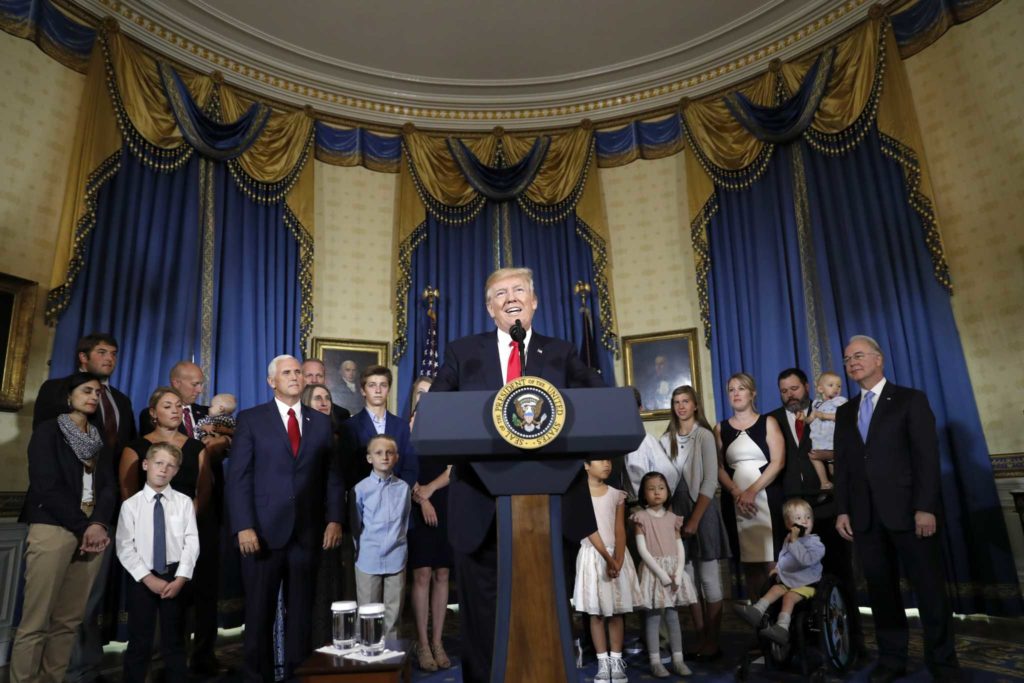
The Trump administration’s own actions are triggering double-digit premium increases on individual health insurance policies purchased by many consumers, a nonpartisan study has found. The analysis released Thursday by the Kaiser Family Foundation found that mixed signals from President Donald Trump have created uncertainty “far outside the norm,” leading insurers to seek higher premium increases for 2018 than would otherwise have been the case. The report comes with Republicans in Congress unable to deliver on their promise to repeal and replace the Obama-era Affordable Care Act. Trump, meanwhile, insists lawmakers try again. The president says “Obamacare” is collapsing, but he’s also threatened to give it a shove by stopping billions of dollars in payments to insurers. Some leading Republicans are considering fallback measures to stabilize markets. Researchers from the Kaiser Foundation looked at proposed premiums for a benchmark silver plan across major metropolitan areas in 20 states and Washington, D.C. Overall, they found that 15 of those cities will see increases of 10 percent or more next year. The highest: a 49 percent jump in Wilmington, Delaware. The only decline: a 5 percent reduction in Providence, Rhode Island. About 10 million people who buy policies through HealthCare.gov and state-run markets are potentially affected, as well as another 5 million to 7 million who purchase individual policies on their own. Consumers in the government-sponsored markets can dodge the hit with the help of tax credits that most of them qualify for to help pay premiums. But off-marketplace customers pay full freight, and they face a second consecutive year of steep increases. Many are self-employed business owners. The report also found that insurer participation in the ACA markets will be lower than at any time since “Obamacare” opened for business in 2014. The average: 4.6 insurers in the states studied, down from 5.7 insurers this year. In many cases, insurers do not sell plans in every community in a state. The researchers analyzed publicly available filings through which insurers justify their proposed premiums to state regulators. To be sure, insurers continue to struggle with sicker-than-expected customers and disappointing enrollment. And an ACA tax on the industry is expected to add 2 to 3 percentage points to premiums next year. But on top of that, the researchers found the mixed signals from the administration account for some of the higher charges. Those could increase before enrollment starts Nov. 1. “The vast majority of companies in states with detailed rate filings have included some language around the uncertainty, so it is likely that more companies will revise their premiums to reflect uncertainty in the absence of clear answers from Congress or the administration,” the report said. Once premiums are set, they’re generally in place for a whole year. Insurers who assumed that Trump will make good on his threat to stop billions in payments to subsidize co-pays and deductibles requested additional premium increases ranging from 2 percent to 23 percent, the report found. Insurers who assumed the IRS under Trump will not enforce unpopular fines on people who remain uninsured requested additional premium increases ranging from 1.2 percent to 20 percent. “In many cases that means insurers are adding double-digit premium increases on top of what they otherwise would have requested,” said Cynthia Cox, a co-author of the Kaiser report. “In many cases, what we are seeing is an additional increase due to the political uncertainty.” That doesn’t sound like what Trump promised when he assumed the presidency. In a Washington Post interview ahead of his inauguration, Trump said, “We’re going to have insurance for everybody.” “There was a philosophy in some circles that if you can’t pay for it, you don’t get it,” he added. “That’s not going to happen with us.” People covered under Obama’s law “can expect to have great health care,” Trump said at the time. “It will be in a much-simplified form. Much less expensive and much better.” But the White House never produced the health care proposal Trump promised. And the GOP bills in Congress would have left millions more uninsured, a sobering side-effect that contributed to their political undoing. The Trump administration sidestepped questions about its own role raised by the Kaiser study. Spokeswoman Alleigh Marre said rising premiums and dwindling choices predate Trump. “The Trump administration is committed to repealing and replacing Obamacare and will always be focused on putting patients, families and doctors, not Washington, in charge of health care,” Marre said in a statement. The ongoing political turmoil for people who buy individual health insurance stands in sharp contrast to relative calm and stability for the majority of Americans insured through workplace plans. The cost of employer-sponsored coverage is expected to rise around 5 or 6 percent next year, benefits consultants say. Republished with permission of The Associated Press.
Mobile protesters call out Luther Strange, Richard Shelby on health care
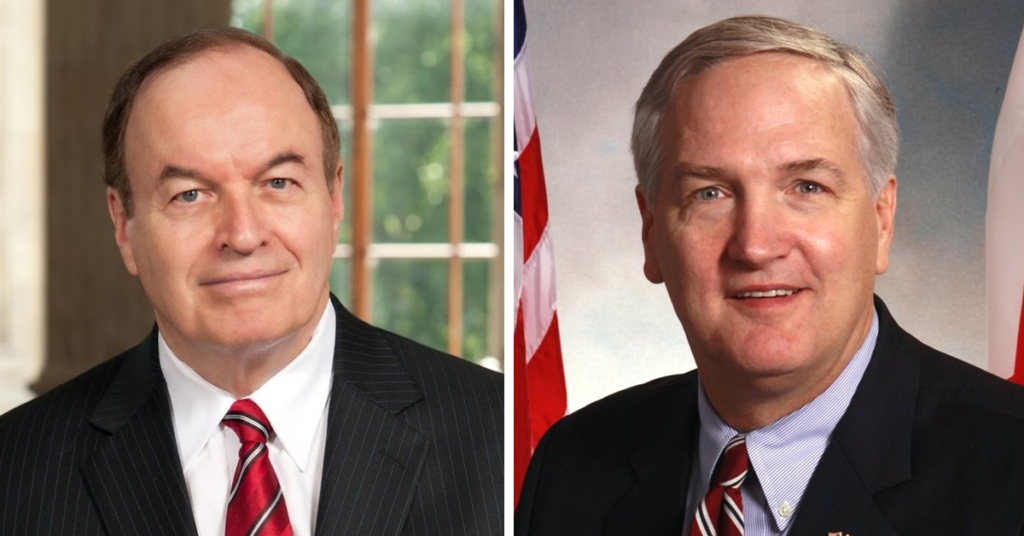
Obamacare supporters gathered in front of Mobile’s federal courthouse Monday, with about 100 people protesting Republican efforts to repeal and replace the Affordable Care Act. As AL.com reports, Monday afternoon’s rally – organized by Mobile attorney Henry Brewster – was part of a statewide effort to get Alabama Sens. Richard Shelby and Luther Strange to “agree to meet face to face with their constituents regarding the health care bill working its way through Congress.” Last week, the Senate revealed its version of the health care bill and their attempt to rollback Obamacare. Senate Majority Leader Mitch McConnell of Kentucky was hoping to have a vote by as soon as Wednesday but faces strong resistance by several key conservatives, including Rand Paul of Kentucky, Ted Cruz of Texas, Utah’s Mike Lee and Ron Johnson of Wisconsin. Those four senators announced they would oppose the Senate bill without changes, effectively slowing down any chance of passage as is. Similar protests were held both in Alabama and across the country Monday, including one outside the Birmingham’s Robert S. Vance Federal Building and Courthouse. Both Strange and Shelby have indicated they are leaning toward “yes” if the bill comes to a vote on the Senate floor. Strange is already committing to support this bill, while Shelby told FOX Business he was “encouraged by key provisions in the Senate bill, which would repeal Obamacare’s disastrous individual and employer mandates, repeal taxes on chronic care, health savings accounts, and medical devices, and put Medicaid on a budget that works for individual states.” Brewster told reporters that the bill was essentially a $400 billion tax cut “for the 1 percent,” and called for anyone within earshot to express their disapproval to the senators, via phone and social media. “It is critically important that we make as much noise as possible to them,” Brewster said. Among the elected officials speaking at the rally: District 1 Mobile County Commissioner Merceria Ludgood, Democratic State Rep. Barbara Drummond of Montgomery and Lorenzo Martin, who serves on the Prichard City Council. Ludgood said it was a “sad reason to have to come together,” adding she was “outraged” by the effort to repeal Obamacare, “because the calculation is not about human lives, it’s about dollars.” At the same time, the nonpartisan Congressional Budget Office released its report on the bill, saying that as many as 22 million people would lose health coverage in the next decade under the Senate’s plan. While 15 million would lose Medicaid coverage, the plan would lower the nation’s deficit by billions over 10 years, with substantial tax cuts for corporations and the wealthy. While 15 million would lose Medicaid coverage, the Senate plan, as it stands, would lower the nation’s deficit by billions over 10 years, providing substantial tax cuts for corporations and the wealthy.
These senators will make or break the GOP’s health care push
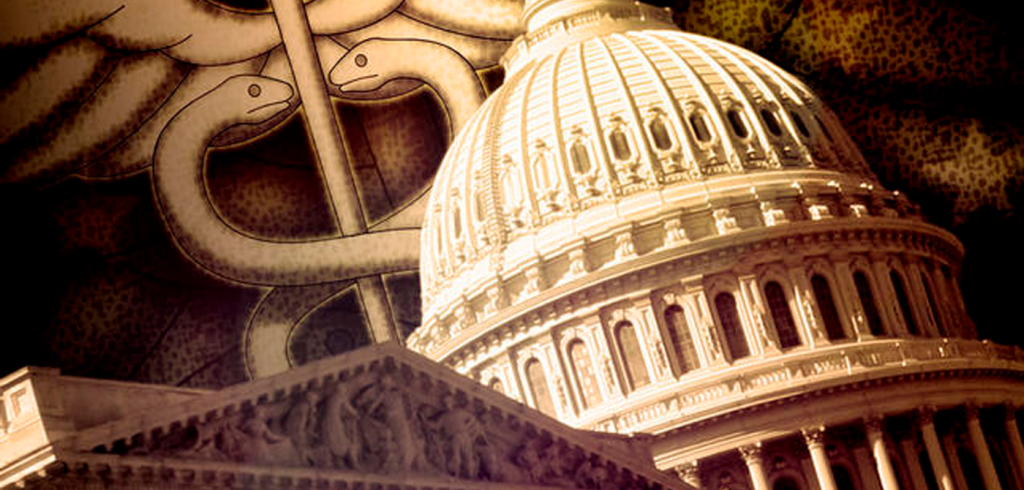
President Donald Trump‘s campaign promise to repeal and replace “Obamacare” is now in the hands of a key group of GOP senators who are opposing -or not yet supporting – legislation Senate Majority Leader Mitch McConnell is pushing to bring to a vote this week. These lawmakers range from moderate to conservative Republicans, and include senators who were just re-elected and a couple facing tough re-election fights. Their concerns about the legislation vary along with their ideology, from those who say it’s overly punitive in ejecting people from the insurance rolls, to others who say it doesn’t go far enough in dismantling former President Barack Obama‘s Affordable Care Act. Satisfying one group risks alienating another. Trump spent part of the weekend placing phone calls to a handful of these lawmakers, focusing on senators who supported his candidacy – Ron Johnson of Wisconsin, Shelley Moore Capito of West Virginia, Ted Cruz of Texas and Rand Paul of Kentucky. The next several days will show whether the president’s efforts pay off and if those lawmakers and the others will ultimately fall in line on legislation that would impact health care for millions of Americans, while allowing Trump and GOP leaders to boast of fulfilling a campaign promise seven years in the making. McConnell has scant margin for error given united Democratic opposition, and can afford to lose only two Republicans from his 52-member caucus. A look at the key Republican lawmakers: — THE CONSERVATIVES Cruz, Paul, Johnson and Sen. Mike Lee of Utah jointly announced their opposition to the legislation as written last Thursday, the same day it was released. They said it did not go far enough to dismantle “Obamacare,” and Johnson also complained of a rushed process. “They’re trying to jam this thing through,” Johnson complained Monday to conservative radio host Hugh Hewitt. Yet Johnson, like many other congressional Republicans, was elected in 2010 on pledges to repeal Obamacare and has been making that promise ever since. While looking for tweaks that can satisfy the conservatives, Senate GOP leaders are also arguing that any Republican who fails to vote for the leadership bill will be responsible for leaving Obamacare standing. Few Senate Republicans expect Paul to vote with them in the end, because of opposition he’s long expressed to government tax subsidies going to pay for private insurance, but many expect Cruz could be won over, especially since he’s running for re-election. — THE ENDANGERED Sen. Dean Heller of Nevada, the only Senate Republican up for re-election next year in a state Hillary Clinton won, surprised Senate GOP leaders by coming out hard against the health legislation at a news conference Friday. Standing next to Nevada’s popular Republican Gov. Brian Sandoval, Heller said he could not support a bill that that “takes away insurance from tens of millions of Americans and hundreds of thousands of Nevadans.” Nevada is one of the states that expanded Medicaid under the Affordable Care Act. The GOP bill would unwind that expansion and cap Medicaid payments for the future. Nevada also has a disproportionate share of older residents under age 65 – when Medicare kicks in – who would likely face higher premiums because the GOP bill gives insurance companies greater latitude to charge more to older customers. Heller’s fellow moderate Republican, Sen. Jeff Flake, faces similar issues of an aging population in neighboring Arizona. He is viewed as the second-most-endangered GOP incumbent next year after Heller. Flake has not yet taken stance on the bill but is facing a raft of television ads from AARP and other groups that are opposed. Phoenix Mayor Greg Stanton, a Democrat seen as a possible Flake challenger next year, said Monday the Senate bill “doesn’t make anyone healthier. It doesn’t make anyone safer.” But Flake, who was outspoken against Trump during last year’s campaign but has grown quieter since his election, also faces a potential primary challenge from the right. Both Heller and Flake face the uncomfortable prospect of angering their party’s base if they don’t support the GOP health bill – but alienating general election moderate and independent voters if they do. — THE MODERATES Sens. Susan Collins of Maine and Lisa Murkowski of Alaska are fellow moderates who’ve raised concerns about the Senate health bill for a variety of reasons. On Monday, after the release of a Congressional Budget Office analysis that the bill will leave 22 million more people uninsured over a decade, Collins announced she would oppose an important procedural vote on the legislation this week. Along with potential opposition from Johnson, Paul and Heller on the vote, that could leave leadership struggling to even advance to a final vote on the health care bill. Collins said that the bill’s Medicaid cuts hurt the most vulnerable and that it doesn’t fix problems for rural Maine. Murkowski has not taken a position but has also expressed concerns about the impacts on a rural, Medicaid-dependent population, as well as funding cuts to Planned Parenthood. — THE TWO-ISSUE SENATORS Sens. Rob Portman of Ohio and Shelley Moore Capito of West Virginia are generally reliable votes for GOP leadership. In this case, both have two specific, and related, concerns causing them heartburn on the health bill: The prevalence of opioid addiction in their states, and their constituents’ reliance on Medicaid. In many cases, voters with addiction problems rely on Medicaid for treatment help, and Portman and Capito both represent states that expanded Medicaid under Obama’s law. Last year about 100,000 low-income West Virginia residents with Medicaid coverage had drug abuse diagnoses, according to state health officials. Republished with permission of The Associated Press.
Promise, promises: What Donald Trump has pledged on health care
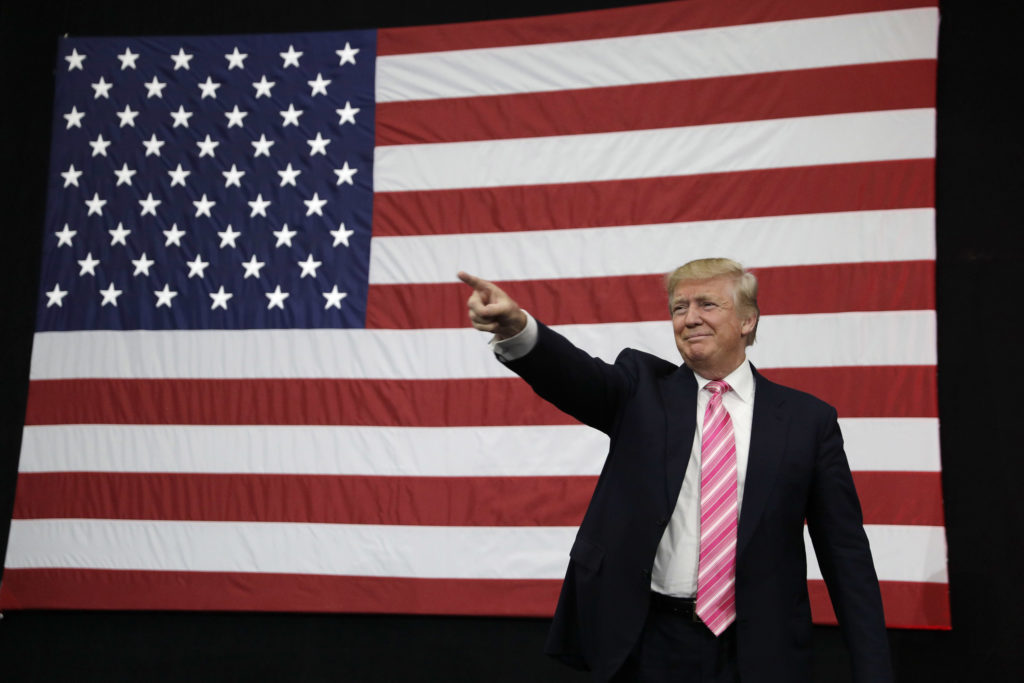
President Donald Trump is not known for plunging into the details of complex policy issues, and health care is no exception. Since his campaign days, Trump has addressed health care in broad, aspirational strokes. Nonetheless he made some clear promises along the way. Those promises come under two big headings. First, what Trump would do about the Affordable Care Act, his predecessor’s health care law, often called “Obamacare.” Second, the kind of health care system that Trump envisions for Americans. On repealing Obama’s law, Trump seems to have a realistic chance to deliver. But he’s nowhere close to fulfilling his generous promises of affordable health care for all. A look at some of the president’s major health care promises, and how the Republican legislation advancing in Congress lines up with them: REPEAL ‘OBAMACARE’ Repealing President Barack Obama‘s signature domestic achievement has been a clear and consistent promise from Trump. Under the Obama law, some 20 million people gained coverage through a combination of subsidized private insurance and a state option to expand Medicaid for low-income people. Costs have been a problem, as are shaky insurance markets for people buying their own policies. But the nation’s uninsured rate is at a historic low, about 9 percent. Both the House and Senate GOP bills would largely fulfill Trump’s promise to repeal Obama’s law. Both bills end Obama’s unpopular requirement for individuals to carry health insurance or risk fines. The legislation also phases down the Medicaid expansion and repeals hundreds of billions of dollars in taxes on upper-income people and health care industries, used under Obama to finance coverage. And it opens the way for states to seek waivers of federal health insurance requirements. Some Republican critics on the right say the congressional bills leave other major parts of “Obamacare” in place, such as subsidies for people buying private insurance, and too many rules. While the subsidy structure would remain, much less taxpayer money is invested in it. “INSURANCE FOR EVERYBODY” In a Washington Post interview before his inauguration, Trump distilled his vision for health care into a few visionary goals. “We’re going to have insurance for everybody,” he said. “There was a philosophy in some circles that if you can’t pay for it, you don’t get it. That’s not going to happen with us.” Trump said he was close to finishing a plan of his own that would have “lower numbers, much lower deductibles.” But the White House never delivered a health care plan from the president. And the congressional plans are likely to increase the number of uninsured people, because even if all Americans have access to coverage, some may no longer be able to afford it. Deductibles are likely to rise for many people with individual coverage because the congressional plans would end subsidies under Obama’s law that reduced out-of-pocket costs for those with modest incomes. The Congressional Budget Office has projected that, on average, premiums for individual policies would be lower over the long run than under current law. But there would be winners and losers. Younger adults and those in good health are likely to find better deals. Older people and those requiring comprehensive coverage could well end up paying more. TAKING AWAY THE LINES During the presidential campaign, Trump called for a system in which insurance plans would compete nationally, offering Americans choice and lower premiums. “What I’d like to see is a private system without the artificial lines around every state,” he said at one of the presidential debates. Many experts say Trump’s vision of interstate competition is unrealistic because health insurance, like real estate, reflects local prices. In any case, it remains unfulfilled in the GOP legislation. Some congressional leaders have promised that cross-state insurance will be addressed in follow-on legislation. Such a bill, however, would likely have to meet a 60-vote test in the Senate. PRESCRIPTION DRUG PRICES During the presidential campaign, and since becoming president, Trump called for action to bring down the cost of prescription drugs. The GOP bills in Congress basically sidestep that. At one point in the campaign, Trump called for giving Medicare the authority to directly negotiate prices with drug makers, an approach favored to some extent by Obama and Democratic presidential candidate Hillary Clinton. Trump also proposed letting Americans import prescription drugs from other countries, where prices are usually lower because of government regulation. But Medicare negotiations are a nonstarter for most congressional Republicans, and Trump’s call for allowing drug importation has faded. MEDICAID In a 2015 interview with The Daily Signal, Trump said: “I’m not going to cut Social Security like every other Republican and I’m not going to cut Medicare or Medicaid.” But last year, his campaign started backtracking on the Medicaid promise, endorsing the idea of limited federal financing for the federal-state program that covers some 70 million low-income people, from newborns to elderly nursing home residents, from special-needs kids to part-time workers lacking job-based health insurance. The Republican bills in Congress would phase out Obama’s financing for Medicaid expansion and limit future federal payments for the entire program as well. The Congressional Budget Office said the House bill would reduce federal Medicaid spending by $834 billion over 10 years, and the program would cover about 14 million fewer people by 2026, a 17 percent reduction. Several Republican governors have joined their Democratic counterparts calling that a massive cost-shift to the states. OPIOID CRISIS The Trump White House says it’s serious about confronting the nation’s opioid epidemic, which shows no sign of letup. “The president is all in,” health secretary Tom Price said on a recent visit to New Hampshire. “He has such passion for this issue because he knows the misery and the suffering that has occurred across this land.” But state officials say rolling back Obama’s Medicaid expansion would deal a heavy blow to their efforts to treat addiction and get its victims back to jobs and family. Among the group of low-income adults made eligible for Medicaid under Obama are many
Alabama sees America’s highest premium spike under Obamacare

A new report from the Department of Health and Human Services (HHS) details the premium changes Americans across the country have experienced under former President Barack Obama‘s signature legislation, Affordable Care Act, better known as Obamacare. According to the report, which uses the data the Obama administration relied on, “average exchange premiums were 105 percent higher in the 39 states using Healthcare.gov in 2017 than average individual market premiums in 2013.” “Premiums for individual market coverage have increased significantly since the Affordable Care Act’s key provisions have taken effect,” the new report reads. The report also found the State of Alabama saw the nation’s highest premium increase since the implementation of Obamacare with an average 223 percent increase between 2013 and 2017 due to the new regulations. That’s more than double the national average. Alabama 2nd District U.S. Rep. Martha Roby said the statistics show why Republicans are working to offer Americans relief from the burdensome law. “The numbers are staggering. Insurance premiums and deductibles have skyrocketed due to the regulations and mandates imposed by Obamacare,” Roby said. “Providers have been forced out of the market, and Alabama consumers now only have one option for health insurance. Problems like these are why I worked to help build support for our three-step plan to repeal and replace Obamacare.” Earlier this month the U.S. House of Representatives passed the American Health Care Act (AHCA), which is the first of a three-phase plan by Republicans in Congress and the Trump Administration to repeal and replace Obamacare and rebuild America’s health care system, based on a plan that is intended to lower premiums and other out-of-pocket costs that have come to weigh on patients.


